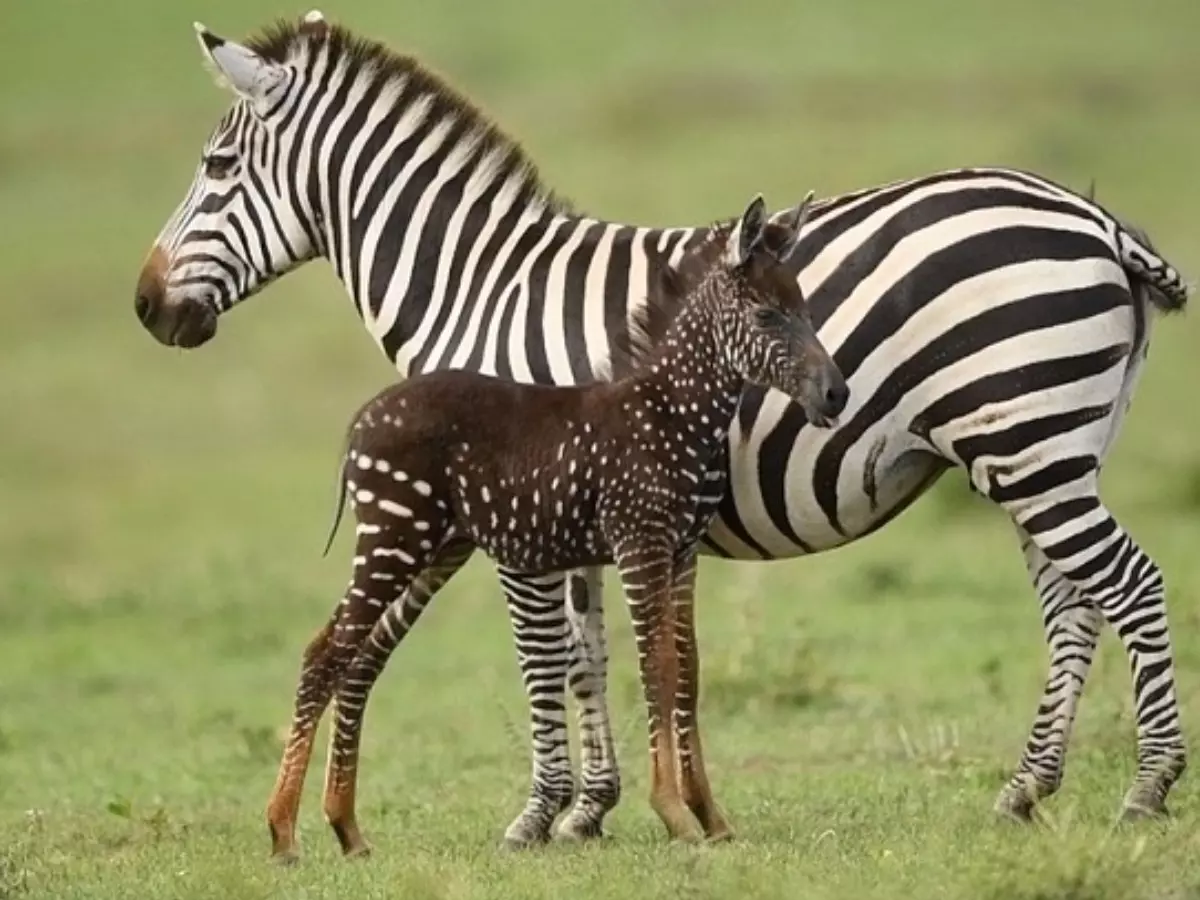Ever Seen A Zebra With Polka Dots Pattern Instead Of Stripes? Animal With Rare Appearance Spotted In Kenya
Born in Kenya's Mara Reserve, this baby zebra has a unique polka dot appearance. He was 'spotted' in 2019 by a group of photographers who were on the search for rhinos.

Nature never fails to amaze us with its never-ending surprises. Zebras are known to be striped black and white animals who live in the wild. But have you ever met or seen a zebra with spots instead of stripes? Well, neither have we!
Born in Kenya's Mara Reserve, this baby zebra has a unique polka dot appearance. He was 'spotted' in 2019 by a group of photographers who were on the search for rhinos. Photographer Frank Liu noticed the eye-catching plains zebra, likely about a week old. ¡°At first glance he looked like a different species altogether,¡± Liu said.
 National Geographic
National Geographic
Antony Tira, a Maasai guide and photographer at the Matira Bush Camp in the Reserve who was one of the first to find the zebra named him Tira. ¡°At first, I thought it was a zebra that had been captured and painted or marked for purposes of [researching] migration,¡± Mr. Tira told the Daily Nation, a Kenyan newspaper. ¡°I was confused when I first saw it.¡±
¡°There is a general rule within the park; whoever finds an animal of significance gets to name it. Tira was the surname of the guide who found him," Liu said.
Zebra stripes are extremely unique, just like our fingerprints. However, Tira's rare colouration could be the first recorded observation in the Masai Mara.
The polka dot appearance is due to a genetic disorder called pseudo-melanism where animals display an abnormality in their stripe pattern.
¡°I do not know the origin of the term pseudo-melanism, but I think it is fair to say that is a popular and undefined term, used to refer to very rare animals that exhibit an apparent abnormality in the stripe pattern process such that light stripes are excluded from much of the trunk and back, but are more common on the extremities¡±, said geneticist Greg Barsh, a faculty investigator at the HudsonAlpha Institute for Biotechnology and a Professor Emeritus at Stanford University.
 Lady Clementine's World
Lady Clementine's World
¡°This animal is different from most others that have been described as pseudo-melanistic¡±, Professor Barsh added. ¡°[I]t is probably better described as ¡®spotted¡¯ or ¡®partially spotted¡¯.¡±
¡°There are a variety of mutations that can disturb the process of melanin synthesis and in all of those disorders, the melanocytes are normally distributed but the melanin they make is abnormal¡±, Professor Barsh said.
¡°We think that in a partially spotted zebra like Tira, the melanocytes are still uniformly and ubiquitously distributed, however, the melanocytes don¡¯t know where they are on the body¡±, Professor Barsh added.
 Nathab
Nathab
¡°In other words, partial spotting in zebras is not an abnormality of melanin synthesis but instead is an abnormality of melanocyte identity.¡±
